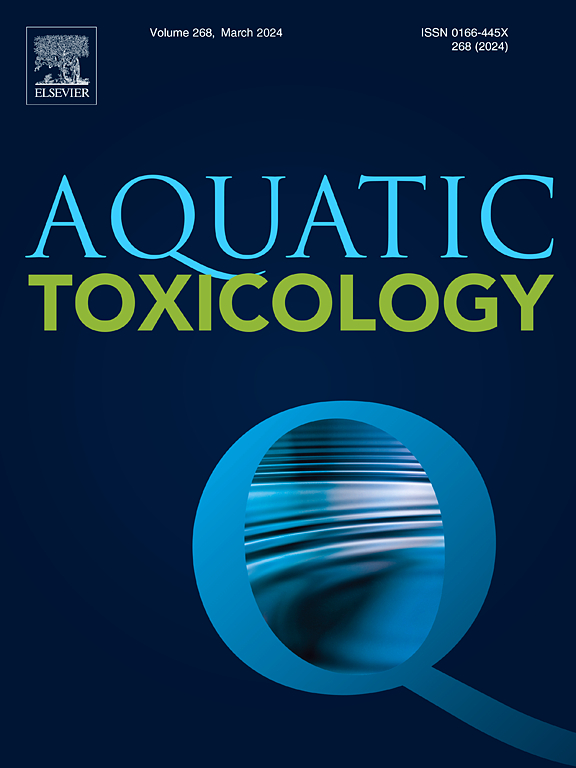Predicting mito-target interactions for per-and poly-fluoroalkyl compounds: Mapping mitochondrial toxicity on zebrafish voltage-dependent anion channel 2
IF 4.1
2区 环境科学与生态学
Q1 MARINE & FRESHWATER BIOLOGY
引用次数: 0
Abstract
Effective and reliable prediction for ecotoxicity, especially when affecting different levels of trophic chains, including humans, is increasingly gaining even more prominence as ecosystems face new threats and challenges, as that posed by the per- and poly-fluoroalkyl substances (PFAS). Toxicological prediction of PFAS in aquatic organisms, such as zebrafish, can be efficiently achieved through computational ecotoxicological approaches which are fully aligned with the state-of-the-art of new approach methodologies (NAMs) and current regulatory recommendations. Specifically in this work, the PFAS toxicodynamics interaction on the zebrafish mitochondrial voltage-dependent anion channel (zfVDAC2) was evaluated, mimicking in silico the PFAS bioaccumulation in low-concentration by integrating structure-based virtual screening (SB-VS) and predictive quantitative structure-activity(mitotoxicity) relationship (QSAR) methodologies (e.g., 2D/3D-QSAR) to address mechanistic aspects of PFAS toxicity. The best ranked PFAS pose docked in zfVDAC2 exhibits a ΔG-binding affinity higher than the ATP, i.e., the native substrate of the zfVDAC2 channel, with prevalence of van der Waal interactions, followed by fluorine (F)-halogen-bonds and finally hydrogen-bonds interactions. Mitochondrial ATP-transport blocking is thus suggested to be linked with local-flexibility perturbations in the zfVDAC2. Similarly, the obtained 2D/3D- QSAR models point out the packing density index as the most significant PFAS molecular descriptor to induce toxicity in the zfVDAC2, and mainly involving van der Waal interactions. The predictive and statistical performance of these models further indicate its NAM relevance regarding PFAS risk assessment while highlighting its interoperability and extrapolation capability for the ecotoxicological evaluation of other families of compounds.

求助全文
约1分钟内获得全文
求助全文
来源期刊

Aquatic Toxicology
环境科学-毒理学
CiteScore
7.10
自引率
4.40%
发文量
250
审稿时长
56 days
期刊介绍:
Aquatic Toxicology publishes significant contributions that increase the understanding of the impact of harmful substances (including natural and synthetic chemicals) on aquatic organisms and ecosystems.
Aquatic Toxicology considers both laboratory and field studies with a focus on marine/ freshwater environments. We strive to attract high quality original scientific papers, critical reviews and expert opinion papers in the following areas: Effects of harmful substances on molecular, cellular, sub-organismal, organismal, population, community, and ecosystem level; Toxic Mechanisms; Genetic disturbances, transgenerational effects, behavioral and adaptive responses; Impacts of harmful substances on structure, function of and services provided by aquatic ecosystems; Mixture toxicity assessment; Statistical approaches to predict exposure to and hazards of contaminants
The journal also considers manuscripts in other areas, such as the development of innovative concepts, approaches, and methodologies, which promote the wider application of toxicological datasets to the protection of aquatic environments and inform ecological risk assessments and decision making by relevant authorities.
 求助内容:
求助内容: 应助结果提醒方式:
应助结果提醒方式:


